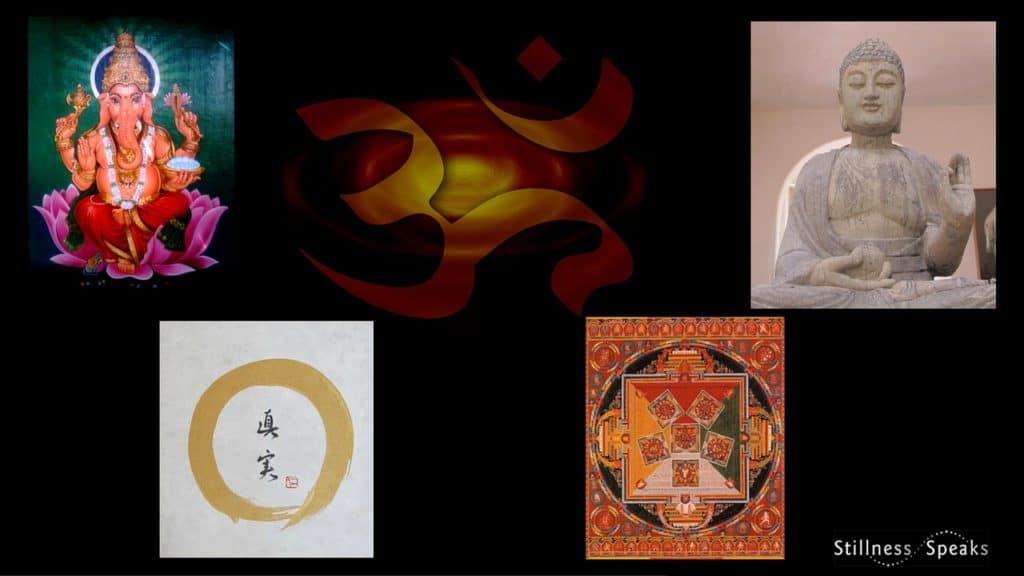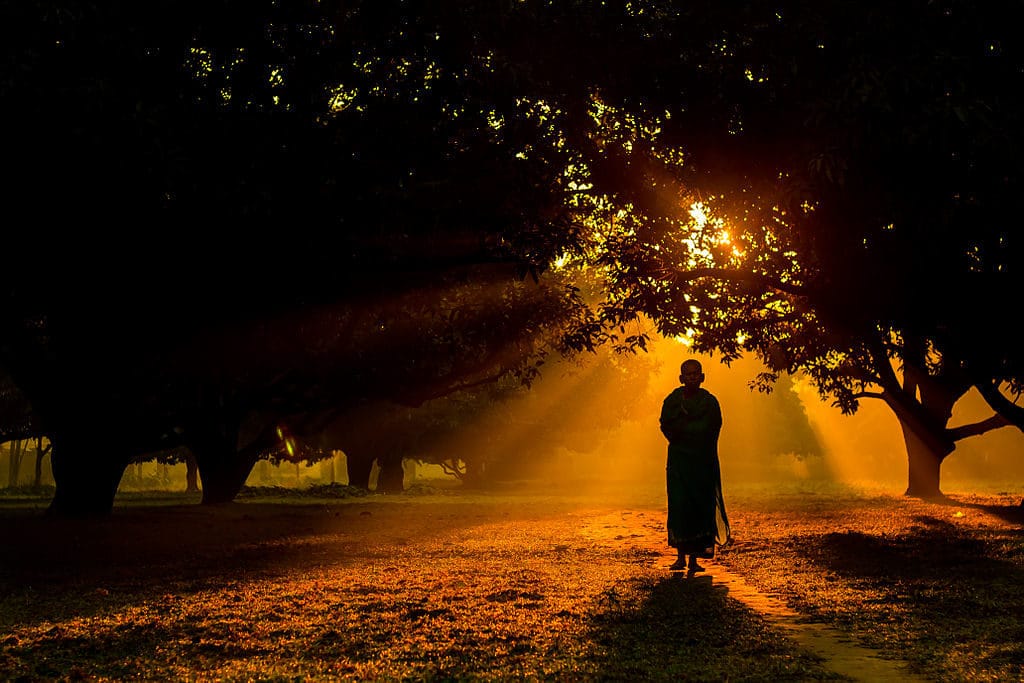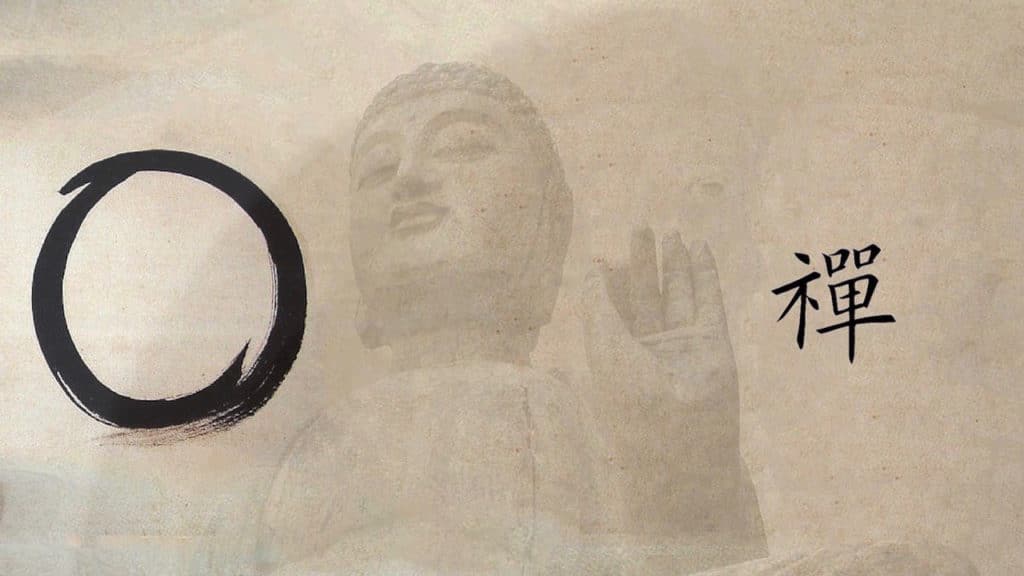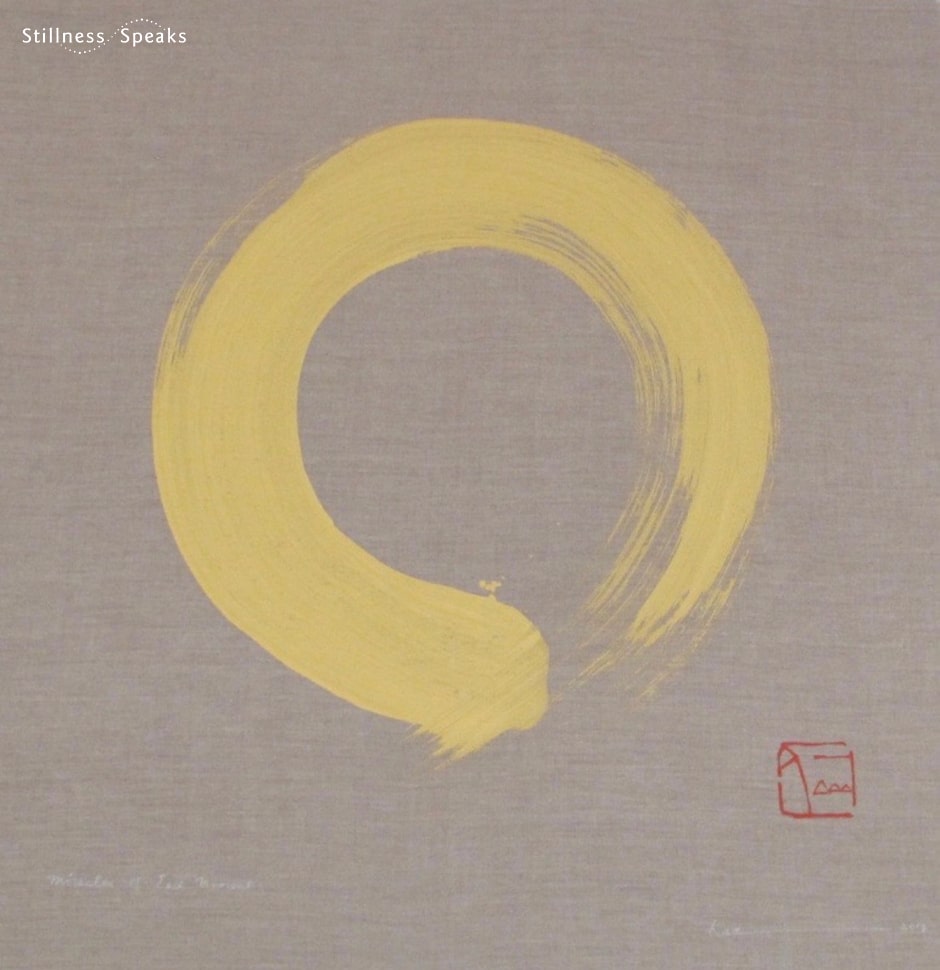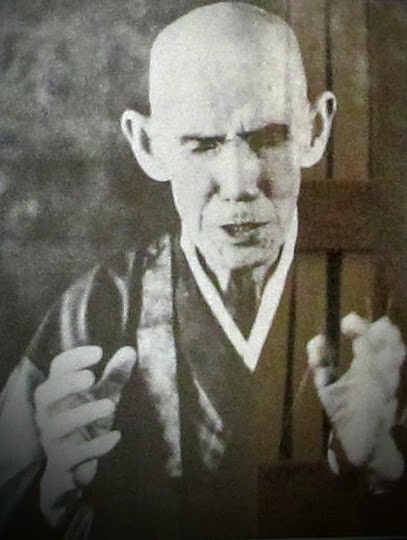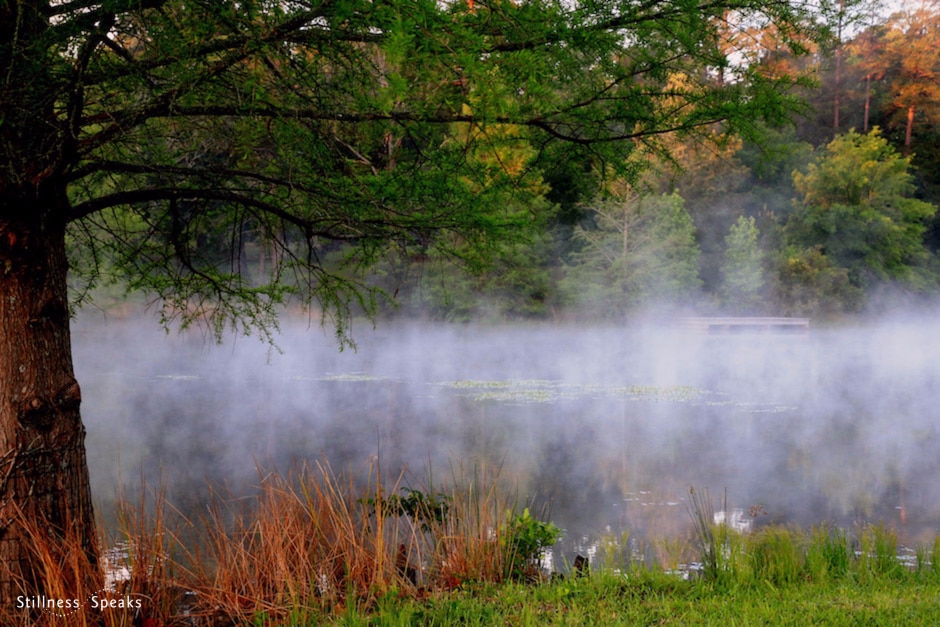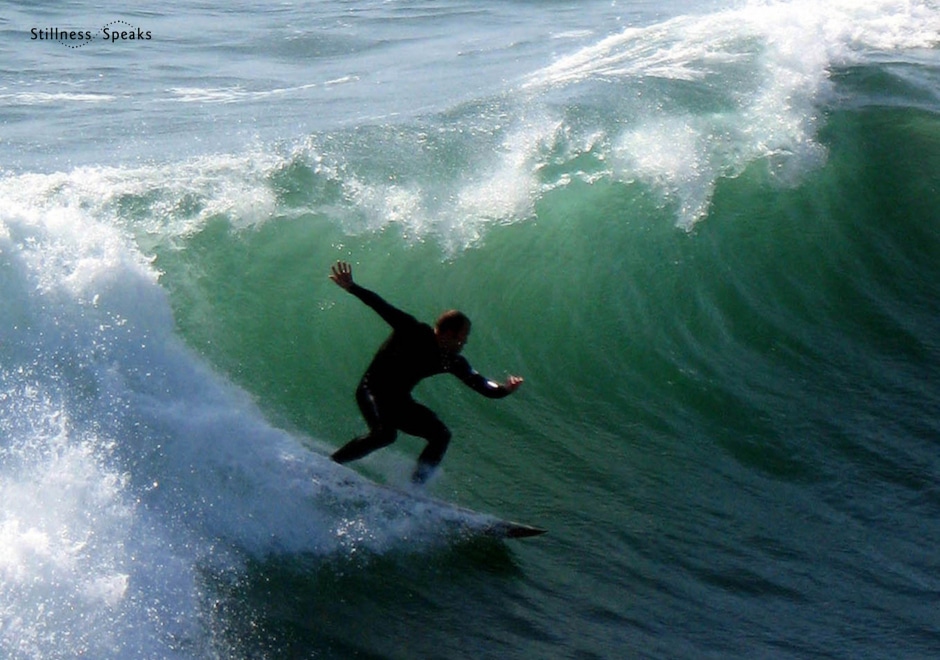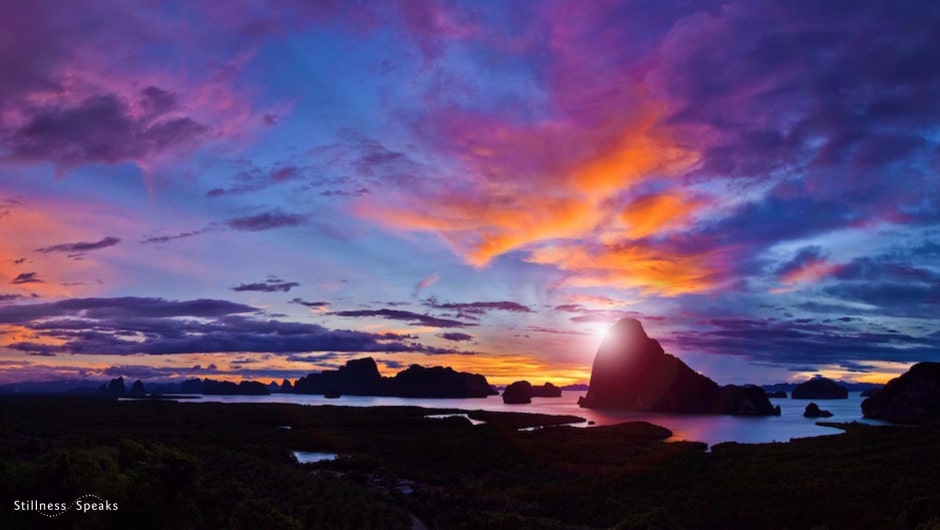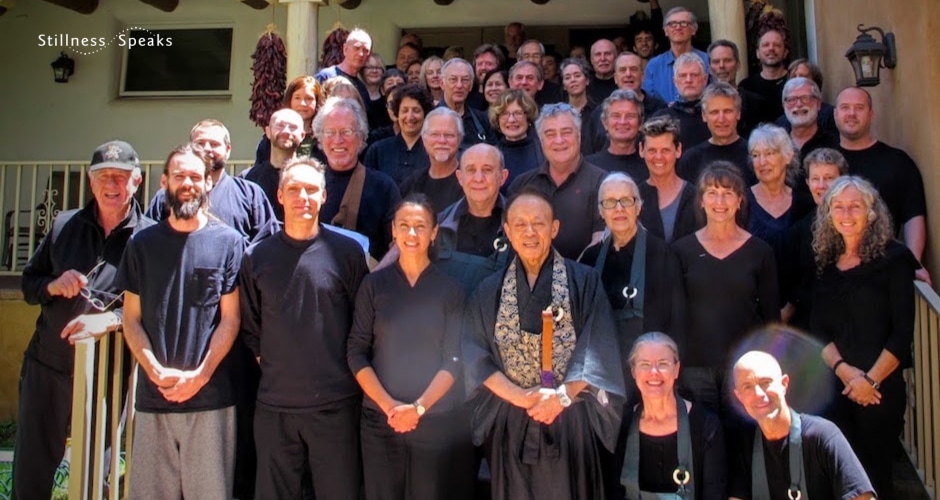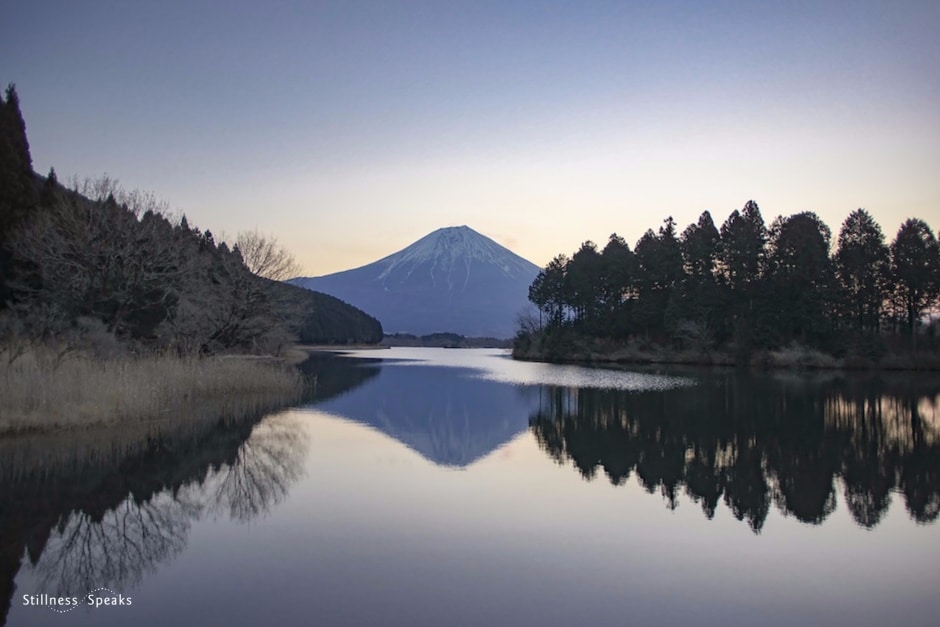“You can never get enough of what you don’t need to make you happy.” ~ Eric Hoffer
In its efforts to consolidate and distribute authentic resources for those deeply interested in self inquiry, Stillness Speaks has created a nine part series that focuses on a central question: What was the secret promise held by the East that the West craved so deeply?
We might conclude, in a word, that the pursuit of Happiness drew Americans East-ward. However, seekers hoped for a happiness rooted in something more meaningful than financial and material pursuits.
This nine part series surveys the spiritual revolution, rooted in profound dissatisfaction with the “getting and spending” focus of western culture, that propelled many westerners to travel to the far east for solutions to the emptiness of materialistic culture. Many seekers brought back a powerful trove, of non-dual tradition including some “variations,” that is inspiring awakening to blossom in the West.
In Part 1, Is Eastern Religion Relevant, we introduce the series and pose the central question, Is Eastern Wisdom Relevant To Me In Contemporary American Culture?
Part 2 Why the American Pilgrimage to India, starts with the genesis of the American spiritual revolution, particularly the great American pilgrimage to India starting in the mid 20th century. Dozens upon dozens of well known westerners sought esoteric understanding in India’s exotic and apparently non-dual philosophies. India’s popularity grew primarily from the influence of Hinduism (and Buddhism) but also somewhat indirectly through Jainism, a sect predominant in Northern India around 6th century BC – and not very well known in the West.
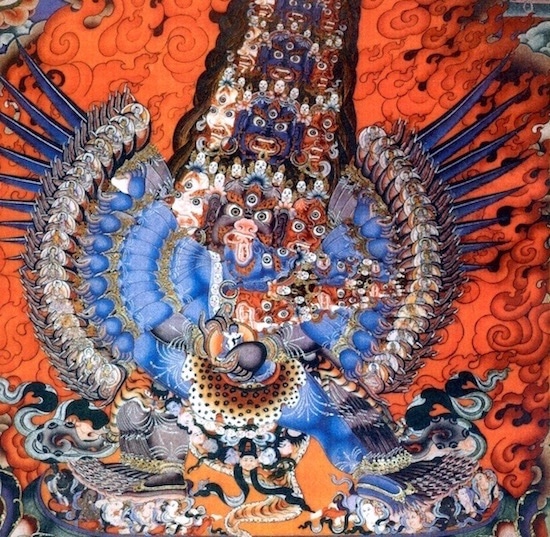
Tibetan Buddhism has persevered over the centuries. Today, there are a vast array of contemporary Dzogchen Masters. Tibetan Buddhism is growing in popularity both with celebrities and academics.
The Peace that Passes All understanding, Part 4, of our series turns to the Western fascination with Zen as practiced in Japan. Western interest in Zen Buddhism blossomed in America in the late 50’s through the early 70’s, as western practitioners began Zen training in earnest in Japan. Zen began to flourish in America as these students returned.
Alan Watts, a central figure in the story of Zen in America, was influenced by Zen Masters D.T. Suzuki, Shunryu Suzuki (founder of the San Francisco Zen Center) and Rinzai Roshi Sokei-an-Sasaki. To many, Watts was a “lone wolf” thinker and a rascal. He was an important influence in the West, popularizing Eastern Wisdom with his books and appearances regarding Zen. Though Watts had notable supporters he also had some influential detractors, including D.T. Suzuki, Philip Kapleau and Robert Aitken.
In Part 5, Zen in Japan: Dogen Zenji, we turn to one of the World’s greatest Zen masters, Eihei Dogen (also known as Dogen Zenji). He has been called the greatest creative thinker in Japanese history.
Dogen, born in 1200, introduced Zen to Japan, stripped of the belief in an imaginary separate inside-self. Dogen also recognized that “the myriad of things” was just as empty. Truly, body and mind had entirely fallen away.
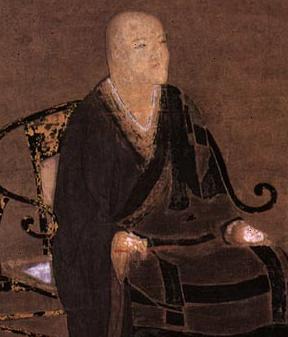
To study the self is to forget the self.
To forget the self is to be actualized by myriad things.
When actualized by myriad things, your body and mind
as well as the bodies and minds of others drop away.
No trace of realization remains,
and this no-trace continues endlessly.”
~ Dogen {from Engaging Buddhism: Why It Matters to Philosophy, page 69}
This section closes with the Dogen scholar and eminent translator (and artist), Kaz Tanahashi’s summary comments on Dogen’s words about practice…
“The “way” is a common image in many religious traditions for the process of spiritual pursuit. It often implies that a seeker is bound to toil on a long path, wandering about and overcoming numerous obstacles before arriving at the final destination. There is a huge distance between the starting point and the goal.
Part 6, Zen in Japan continues Dogen’s journey of realization (& Zen in Japan). This part features Kaz Tanahashi’s commentary on Dogen and emphasizes the centrality of practice: Dogen says, “Between aspiration, practice, enlightenment, and nirvana, there is not a moment’s gap.” Thus, nirvana is one of the four elements in a practitioner’s spiritual activity. For Dogen, nirvana is inseparable from enlightenment, and it is inseparable from one’s practice at each moment. In other words, there is no authentic practice that lacks enlightenment or nirvana.
In contrast to focused meditation practice, Part 6 mentions that a number of respected teachers in America do not recommend practice. Meditation is what we are, and awakening depends on the depth and desire of the student.
Part 7, What are Soto, Rinzai, & Sanbokyodan Schools? jumps to the Twentieth Century and explores the Soto and Rinzai schools of Zen as well as the hybrid Sanbokyodan school. Soto Zen teacher Norman Fischer explains the Soto and Rinzai schools, and the differences between them in some detail. Hakuun Yasutani (born in 1885), founder of the Sanbokyodan line of Zen emphasized opening the teachings of Zen to ordinary lay people, which brought many interested Westerners to Japan.
Yasutani shared the same “Great Doubt” expressed by Dogen: What was the need to arouse the mind that seeks enlightenment and undertakes strenuous practice when doctrine clearly stated that “all sentient beings without exception have the Buddha nature.”
Hakuun Yasutani had a second question: What happens after death? This is often referred to as one of the Big Questions in life.
The next section, Part 8-The Birth of Sanbo Zen, explores how the Sanbokyodan influence became the seed for much of what is now experienced as Zen in America. Sanbokyodan (later Sanbo Zen) was influenced by a succession of Japanese Masters including, Hakuun Harada, Hakuun Yasutani and later, Koun Yamada Roshi. Western teachers who practiced with these masters include Philip Kapleau, Robert Aitken, and David Loy. This lineage had a small but inordinate influence on Zen in The West.
In the concluding segment of our series, (Part 9) Zen and Work: Sanbo Zen, we learn about the Sanbo Zen lineage and its dynamic Abbot Ryoun Yamada Roshi.
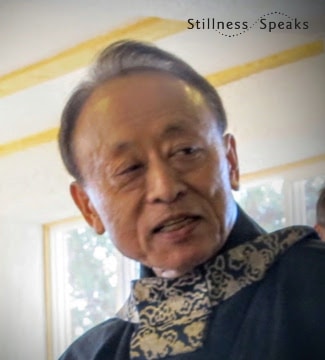
Sanbo Zen, is unique: It is a Japanese Zen lineage whose primary mission is help lay people directly experience kensho (the experience of awakening), followed by the complete integration of that direct experience into every aspect of life. It’s goal is to deepen and perfect the clarity of this direct experience.
Ryoun Yamada Roshi is a living example of that integration : he’s a Zen master who is also a highly successful executive (serving as Chairman of the Board for several corporations).
“Awakening is like seeing your eye with your own eye. Realizing this would be the quickest way to transcend “me-you” dualistic opposition in all of it’s forms and would bring true peace to the world.” ~ Yamada Koun Roshi, from Zen-The Authentic Gate
Opening quote (Eric Hoffer): Quote Garden.
Kaz Tanahashi’s quotes: excerpted from The Fundamentals of Zen – published in Tricycle Magazine February 19, 2009
Images (edited): 1) Collage: see Part 1 for image credits, 2) A Hindu monk is walking in a mango garden Dinajpur, Bangladesh, by Jubair1985, CC BY-SA 4.0 3) Tibetan thangka of the Blue Tara by Anonymous, Public Domain – {{PD-1923}}, 4) Collage: see Part 4 for credits, 5) Dogen by Unknown, Public Domain – PD-1923, 6) enso by Kaz Tanahasi – snapshot of Kaz’s painting at Chris Hebard House, used with permission, 7) Hakuun Yasutani Roshi, photo of photo at Mountain Cloud Zen Center, by Cherie Manifest, 8) Ryoun Yamada Roshi by Cherie Manifest.
